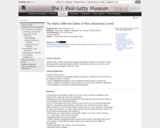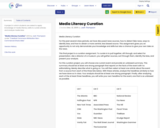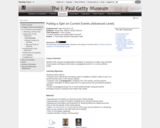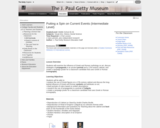
Students will use primary sources to detect propaganda.
- Subject:
- American History
- Material Type:
- Activity/Lab
- Author:
- Michelle Carr
- Date Added:
- 11/19/2020

Students will use primary sources to detect propaganda.

This lesson reimagines an existing instructional resource, "The Grapes of Wrath by John Steinbeck" created by Franky Abbott, Digital Public Library of America.
In this remix, "The Grapes of Wrath" and the related primary source documents are exchanged for "Farewell to Manzanar" and related primary sources accessed through secondary open-source databases.
Discussion questions ask students to consider the memoir in light of its historical context and students gain experience reading and evaluating visual sources including political cartoons and propaganda posters to understand how elements of rhetorical can shape and/or reflect cultural values.

Students will compare portrayals of individual soldiers to depictions of battle scenes, write two articles representing two different perspectives about a current war, and manipulate a photograph to alter its mood.

A project in which students are asked to apply knowledge of media literacy skills to curate articles and analyze media bias

This site provides a standards-based lesson on how the use of posters during WWII helped win over the hearts and minds of the American people.

Students will compare propagandistic strategies in artworks to modern-day examples of persuasive techniques and create a propaganda poster for a current political leader.

Students will examine the influence of Greek and Roman mythology on art, discuss strategies of propaganda in an ancient portrait and a 17th-century cabinet, and create a campaign poster for a classroom candidate that uses Greek or Roman iconography.